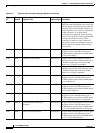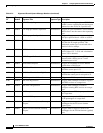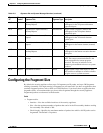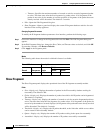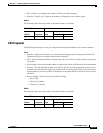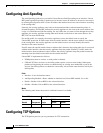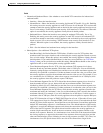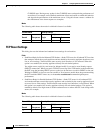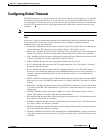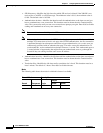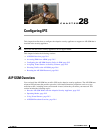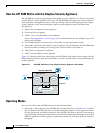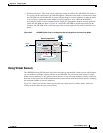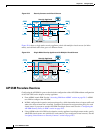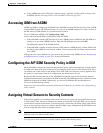
27-22
Cisco ASDM User Guide
OL-16647-01
Chapter 27 Configuring Advanced Firewall Protection
Configuring TCP Options
CLOSING state. Having many sockets in the CLOSING state can degrade the performance of
an end host. For example, some WinSock mainframe clients are known to exhibit this behavior
and degrade the performance of the mainframe server. Using this feature creates a window for
the simultaneous close down sequence to complete.
Modes
The following table shows the modes in which this feature is available:
TCP Reset Settings
This dialog box sets the inbound and outbound reset settings for an interface.
Fields
• Send Reset Reply for Denied Inbound TCP Packets—Sends TCP resets for all inbound TCP sessions
that attempt to transit the security appliance and are denied by the security appliance based on access
lists or AAA settings. Traffic between same security level interfaces is also affected. When this
option is not enabled, the security appliance silently discards denied packets.
You might want to explicitly send resets for inbound traffic if you need to reset identity request
(IDENT) connections. When you send a TCP RST (reset flag in the TCP header) to the denied host,
the RST stops the incoming IDENT process so that you do not have to wait for IDENT to time out.
Waiting for IDENT to time out can cause traffic to slow because outside hosts keep retransmitting
the SYN until the IDENT times out, so the service resetinbound command might improve
performance.
• Send Reset Reply for Denied Outbound TCP Packets—Sends TCP resets for all outbound TCP
sessions that attempt to transit the security appliance and are denied by the security appliance based
on access lists or AAA settings. Traffic between same security level interfaces is also affected. When
this option is not enabled, the security appliance silently discards denied packets. This option is
enabled by default. You might want to disable outbound resets to reduce the CPU load during traffic
storms, for example.
Modes
The following table shows the modes in which this feature is available:
Firewall Mode Security Context
Routed Transparent Single
Multiple
Context System
• • • •—
Firewall Mode Security Context
Routed Transparent Single
Multiple
Context System
• • • •—



